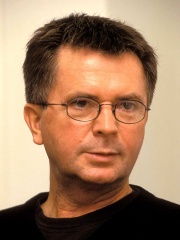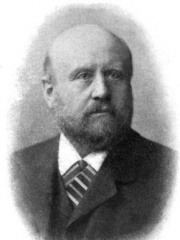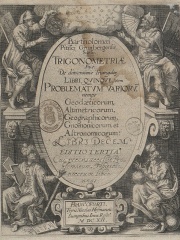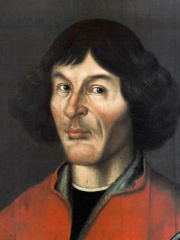
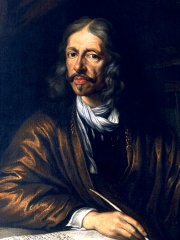
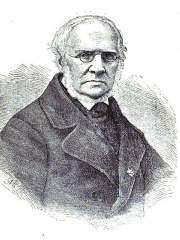
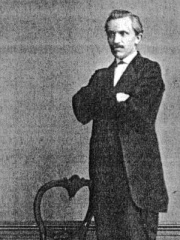
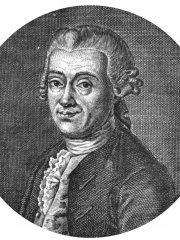
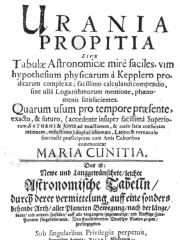
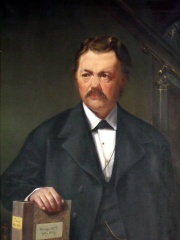

The Most Famous
ASTRONOMERS from Poland
This page contains a list of the greatest Polish Astronomers. The pantheon dataset contains 644 Astronomers, 14 of which were born in Poland. This makes Poland the birth place of the 9th most number of Astronomers behind Netherlands, and Russia.
Top 10
The following people are considered by Pantheon to be the top 10 most legendary Polish Astronomers of all time. This list of famous Polish Astronomers is sorted by HPI (Historical Popularity Index), a metric that aggregates information on a biography's online popularity. Visit the rankings page to view the entire list of Polish Astronomers.

1. Nicolaus Copernicus (1473 - 1543)
With an HPI of 93.78, Nicolaus Copernicus is the most famous Polish Astronomer. His biography has been translated into 174 different languages on wikipedia.
Nicolaus Copernicus (19 February 1473 – 24 May 1543) was a Renaissance polymath who formulated a model of the universe that placed the Sun rather than Earth at its center. The publication of Copernicus's model in his book De revolutionibus orbium coelestium (On the Revolutions of the Celestial Spheres), just before his death in 1543, was a major event in the history of science, triggering the Copernican Revolution and making a pioneering contribution to the Scientific Revolution. Though a similar heliocentric model had been developed eighteen centuries earlier by Aristarchus of Samos, an ancient Greek astronomer, Copernicus likely arrived at his model independently. Copernicus was born and died in Royal Prussia, a semiautonomous and multilingual region created within the Crown of the Kingdom of Poland from lands regained from the Teutonic Order after the Thirteen Years' War. A polyglot and polymath, he obtained a doctorate in canon law and was a mathematician, astronomer, physician, classics scholar, translator, governor, diplomat, and economist. From 1497 he was a Warmian Cathedral chapter canon. In 1517 he derived a quantity theory of money—a key concept in economics—and in 1519 he formulated an economic principle that later came to be called Gresham's law.

2. Johannes Hevelius (1611 - 1687)
With an HPI of 73.07, Johannes Hevelius is the 2nd most famous Polish Astronomer. His biography has been translated into 60 different languages.
Johannes Hevelius (in German also known as Hevel; Polish: Jan Heweliusz; (1611-01-28)28 January 1611 – 28 January 1687) was a councillor and mayor of Danzig (Gdańsk), in the Polish–Lithuanian Commonwealth. As an astronomer, he gained a reputation as "the founder of lunar topography", and described ten new constellations, seven of which are still used by astronomers.

3. Karl Ludwig Hencke (1793 - 1866)
With an HPI of 71.36, Karl Ludwig Hencke is the 3rd most famous Polish Astronomer. His biography has been translated into 35 different languages.
Karl Ludwig Hencke (8 April 1793 – 21 September 1866) was a German amateur astronomer and discoverer of minor planets. He is sometimes confused with Johann Franz Encke, another German astronomer.

4. Albert Marth (1828 - 1897)
With an HPI of 70.37, Albert Marth is the 4th most famous Polish Astronomer. His biography has been translated into 40 different languages.
Albert Marth (5 May 1828 – 6 August 1897) was a German astronomer who worked in Britain and Ireland.
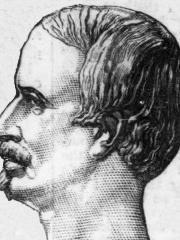
5. Robert Luther (1822 - 1900)
With an HPI of 67.82, Robert Luther is the 5th most famous Polish Astronomer. His biography has been translated into 37 different languages.
Karl Theodor Robert Luther (16 April 1822, Świdnica – 15 February 1900 Düsseldorf), normally published as Robert Luther, was a German astronomer. While working at the Bilk Observatory in Düsseldorf, Germany, he searched for asteroids and discovered 24 of them between 1852 and 1890. Seven times Lalande Prize winner.

6. Johann Daniel Titius (1729 - 1796)
With an HPI of 64.06, Johann Daniel Titius is the 6th most famous Polish Astronomer. His biography has been translated into 27 different languages.
Johann Daniel Titius (born Johann Daniel Tietz(e), 2 January 1729 – 16 December 1796) was a German astronomer and a professor at Wittenberg. Titius was born in Konitz (Chojnice), Royal Prussia (Crown of Poland) to Jakob Tietz, a merchant and council member from Konitz, and Maria Dorothea, née Hanow. His original name was Johann Tietz, but as was customary in the 18th century, when he became a university professor, he Latinized his surname to Titius. Tietz attended school in Danzig (Gdańsk) and studied at the University of Leipzig (1749–1752). He died in Wittenberg, Electorate of Saxony.

7. Maria Cunitz (1610 - 1664)
With an HPI of 63.94, Maria Cunitz is the 7th most famous Polish Astronomer. Her biography has been translated into 26 different languages.
Maria Cunitz or Maria Cunitia (other versions of surname include: Cunicia, Cunitzin, Kunic, Cunitiae, Kunicia, Kunicka; 1610 – 22 August 1664) was an accomplished Silesian astronomer, and the most notable female astronomer of the early modern era. She authored a book Urania propitia, in which she provided new tables, new ephemera, and a simpler working solution to Kepler's second law for determining the position of a planet on its elliptical path. The Cunitz crater on Venus is named after her. The minor planet 12624 Mariacunitia is named in her honour.

8. Adalbert Krueger (1832 - 1896)
With an HPI of 62.90, Adalbert Krueger is the 8th most famous Polish Astronomer. His biography has been translated into 16 different languages.
Karl Nikolaus Adalbert Krueger (9 December 1832 – 21 April 1896) was a German astronomer. Born in Marienburg, Prussia (now Malbork, Poland), he was editor of Astronomische Nachrichten from 1881 until his death. Krueger died of a heart condition in Kiel at the age of 63.

9. Wilhelm Gliese (1915 - 1993)
With an HPI of 62.33, Wilhelm Gliese is the 9th most famous Polish Astronomer. His biography has been translated into 27 different languages.
Wilhelm Gliese (German pronunciation: [ˈɡliːzə], English GLEE-zə; 21 June 1915 – 12 June 1993) was a German astronomer who specialized in the study and cataloging of nearby stars.
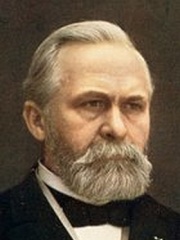
10. Wilhelm Julius Foerster (1832 - 1921)
With an HPI of 61.25, Wilhelm Julius Foerster is the 10th most famous Polish Astronomer. His biography has been translated into 22 different languages.
Wilhelm Julius Foerster (16 December 1832 – 18 January 1921) was a German astronomer. His name can also be written Förster, but is usually written "Foerster" even in most German sources where 'ö' is otherwise used in the text.
People
Pantheon has 15 people classified as Polish astronomers born between 1473 and 1963. Of these 15, 2 (13.33%) of them are still alive today. The most famous living Polish astronomers include Aleksander Wolszczan, and Richard Kowalski. The most famous deceased Polish astronomers include Nicolaus Copernicus, Johannes Hevelius, and Karl Ludwig Hencke. As of April 2024, 1 new Polish astronomers have been added to Pantheon including Richard Kowalski.
Living Polish Astronomers
Go to all RankingsDeceased Polish Astronomers
Go to all RankingsNicolaus Copernicus
1473 - 1543
HPI: 93.78
Johannes Hevelius
1611 - 1687
HPI: 73.07
Karl Ludwig Hencke
1793 - 1866
HPI: 71.36
Albert Marth
1828 - 1897
HPI: 70.37
Robert Luther
1822 - 1900
HPI: 67.82
Johann Daniel Titius
1729 - 1796
HPI: 64.06
Maria Cunitz
1610 - 1664
HPI: 63.94
Adalbert Krueger
1832 - 1896
HPI: 62.90
Wilhelm Gliese
1915 - 1993
HPI: 62.33
Wilhelm Julius Foerster
1832 - 1921
HPI: 61.25
Hugo von Seeliger
1849 - 1924
HPI: 59.25
Bartholomaeus Pitiscus
1561 - 1613
HPI: 59.18
Newly Added Polish Astronomers (2025)
Go to all RankingsOverlapping Lives
Which Astronomers were alive at the same time? This visualization shows the lifespans of the 9 most globally memorable Astronomers since 1700.

